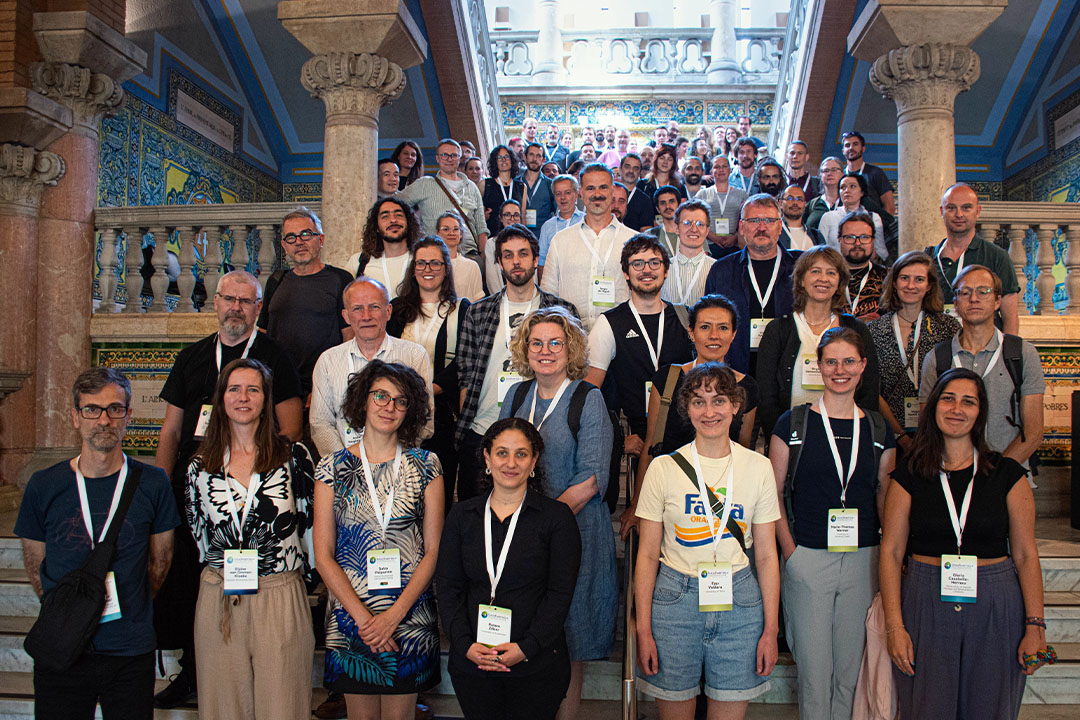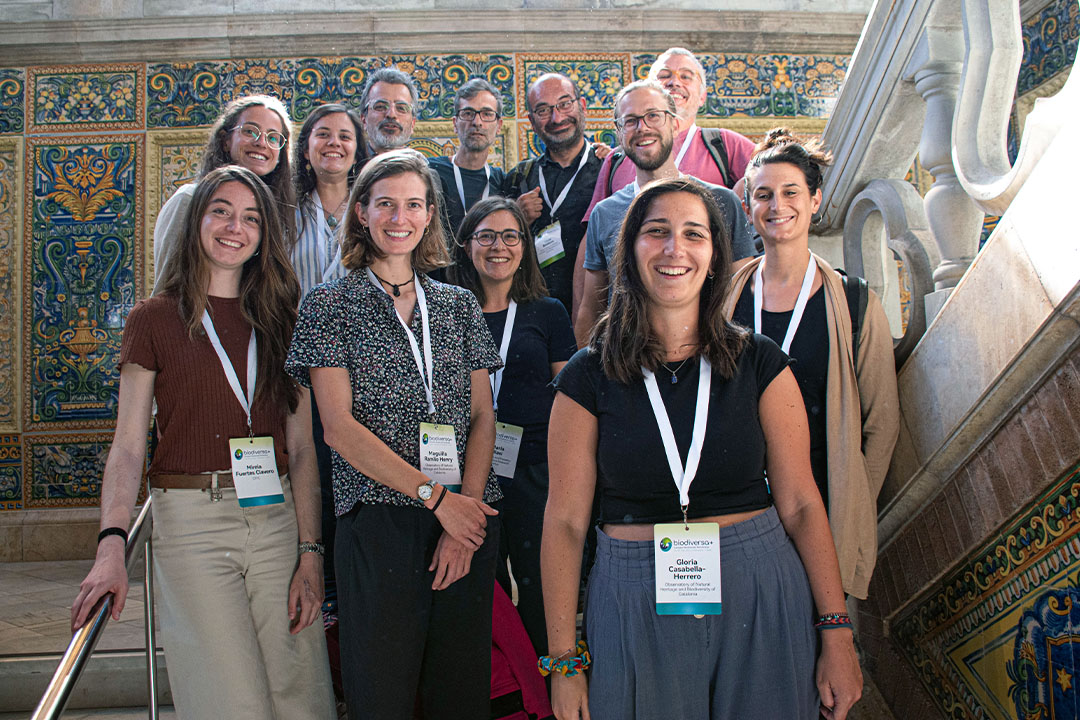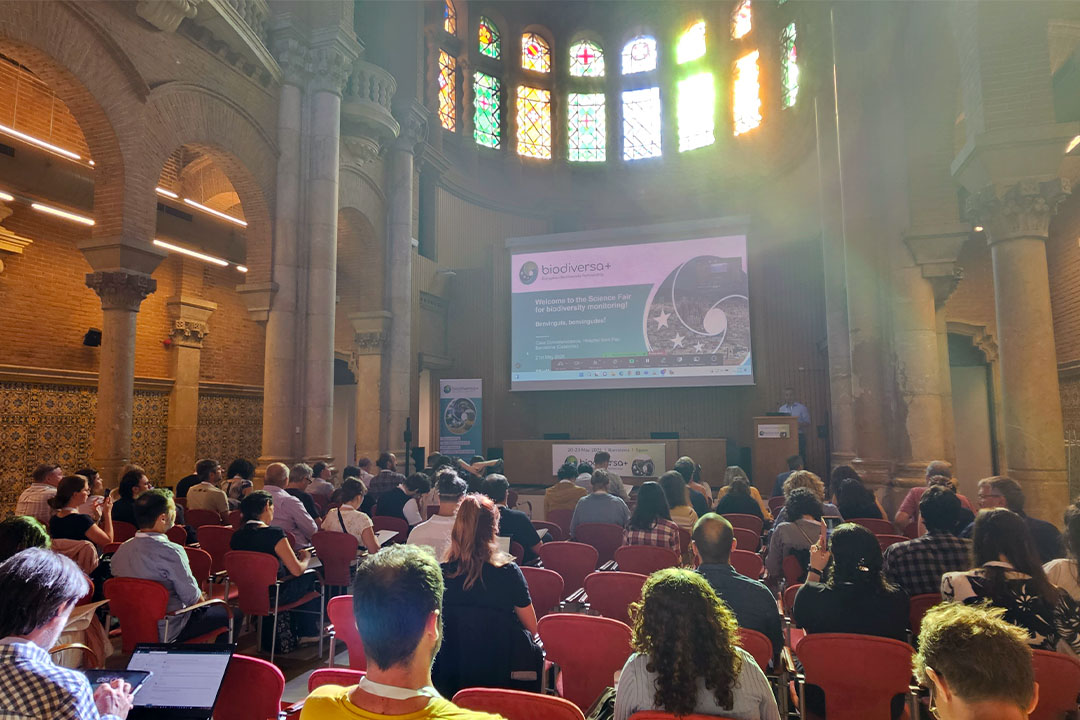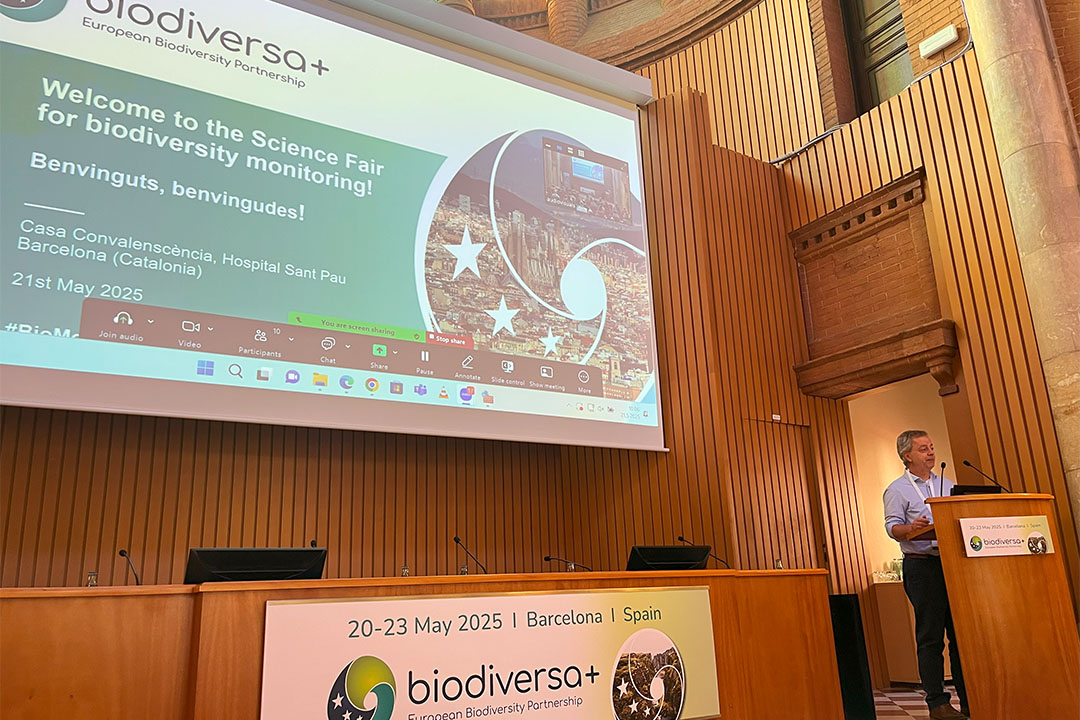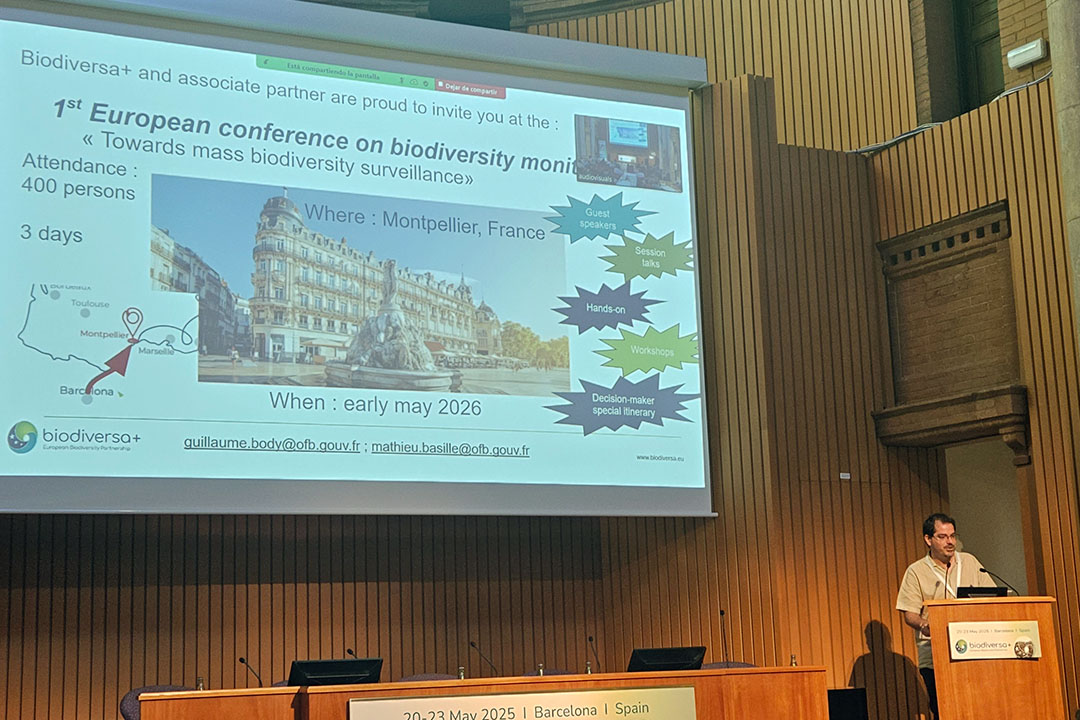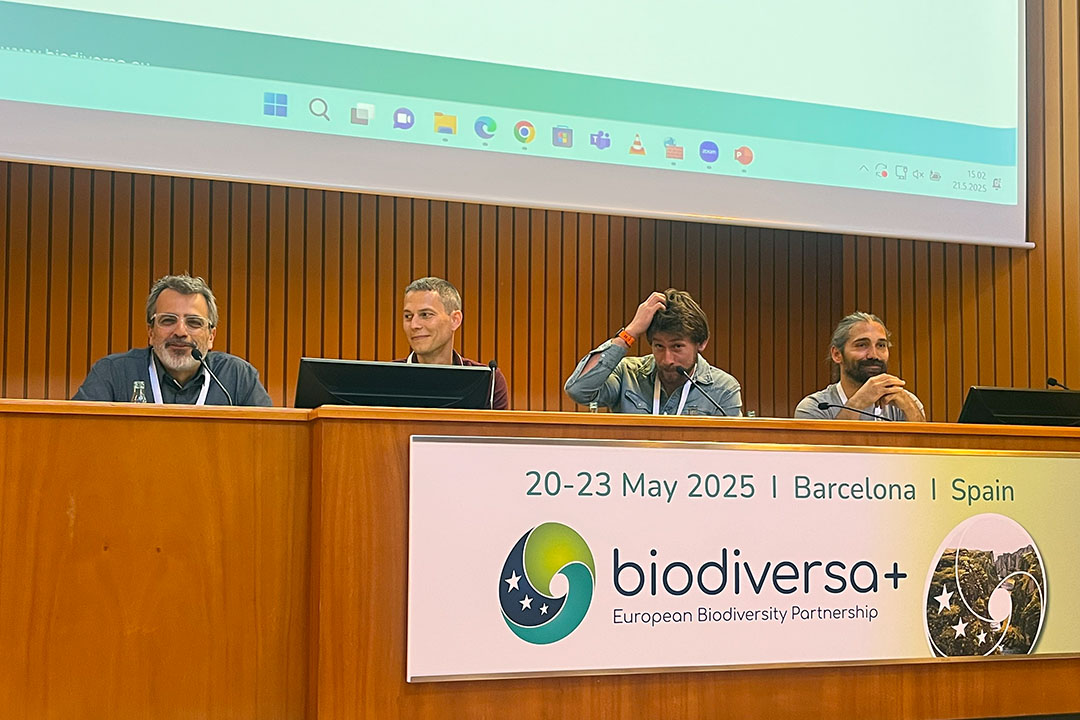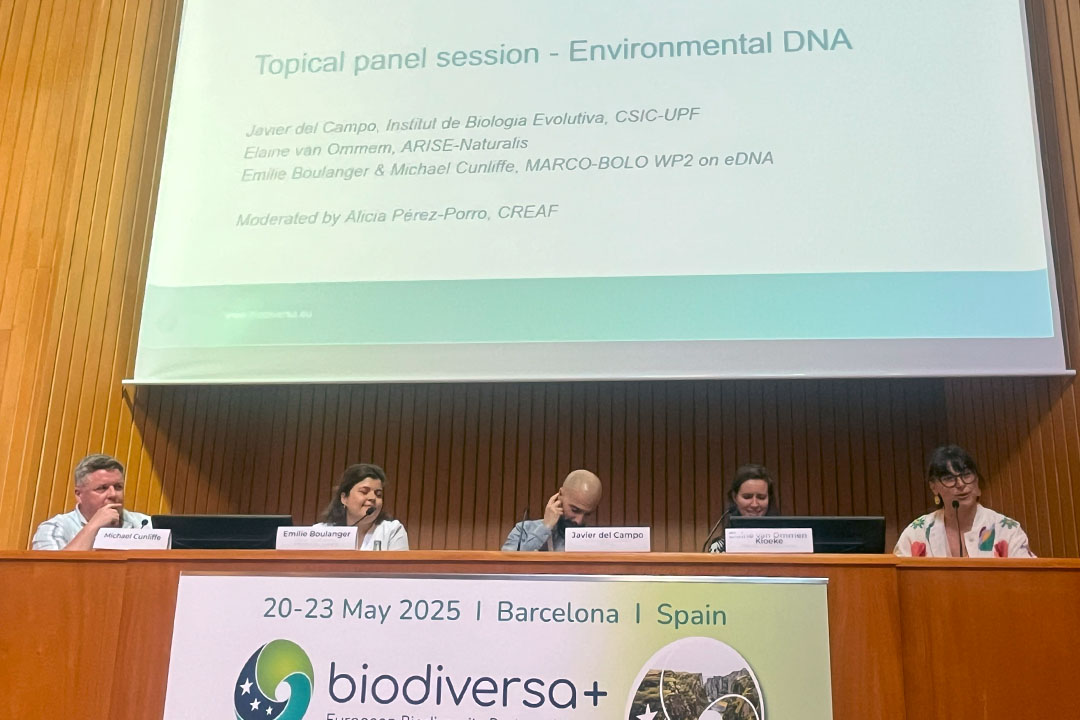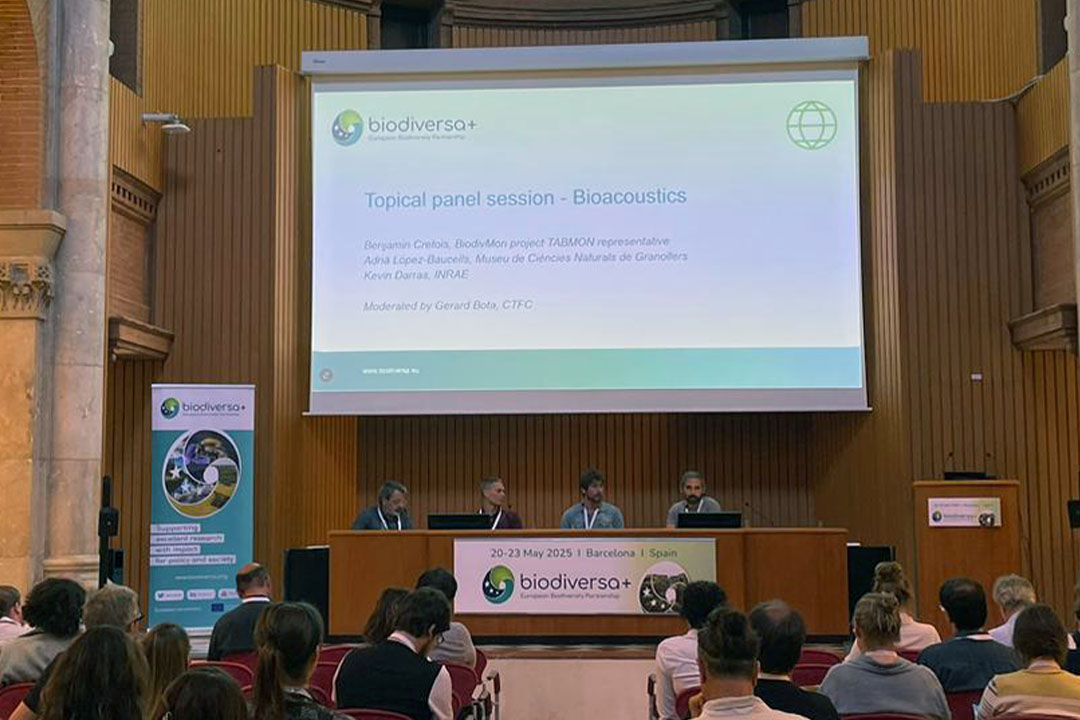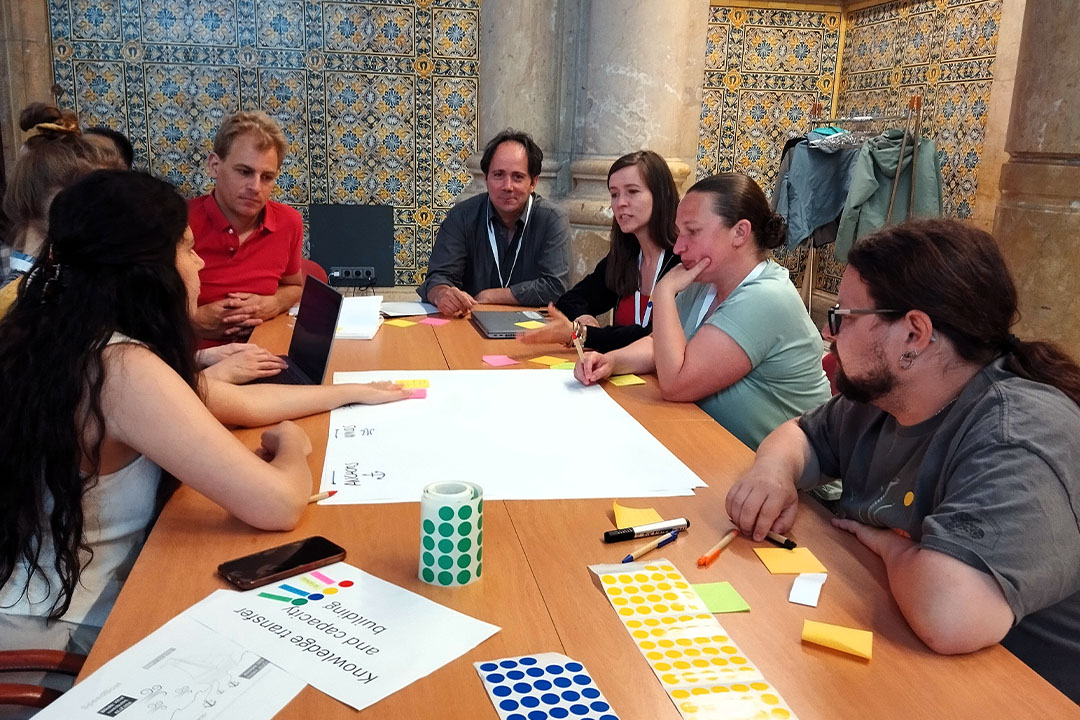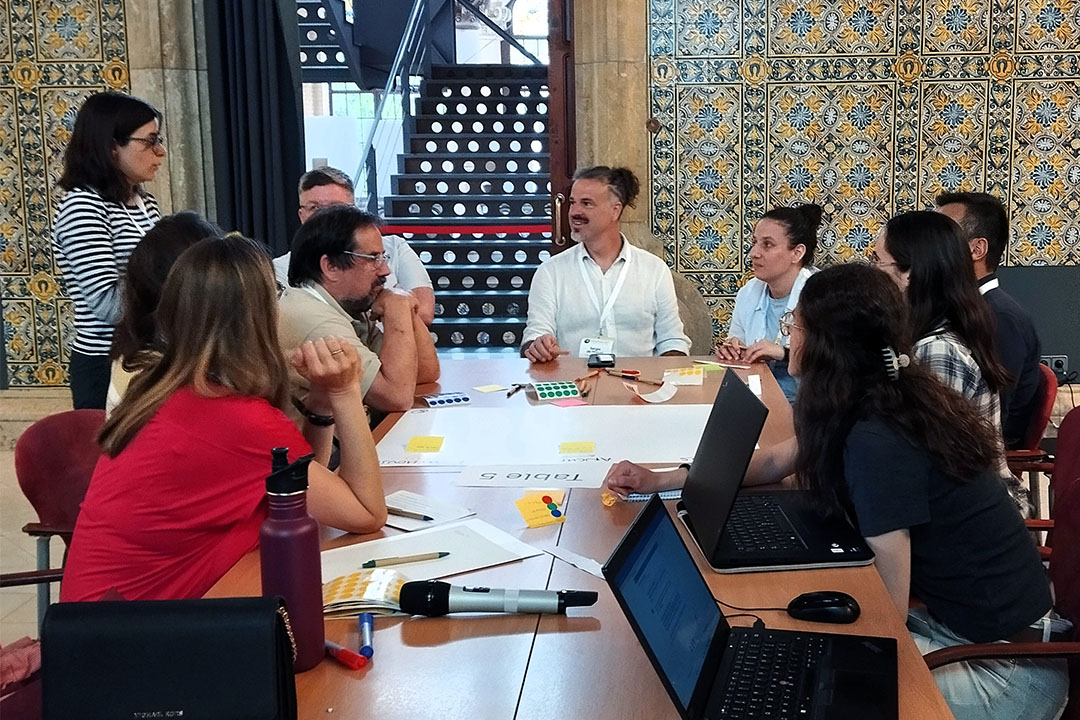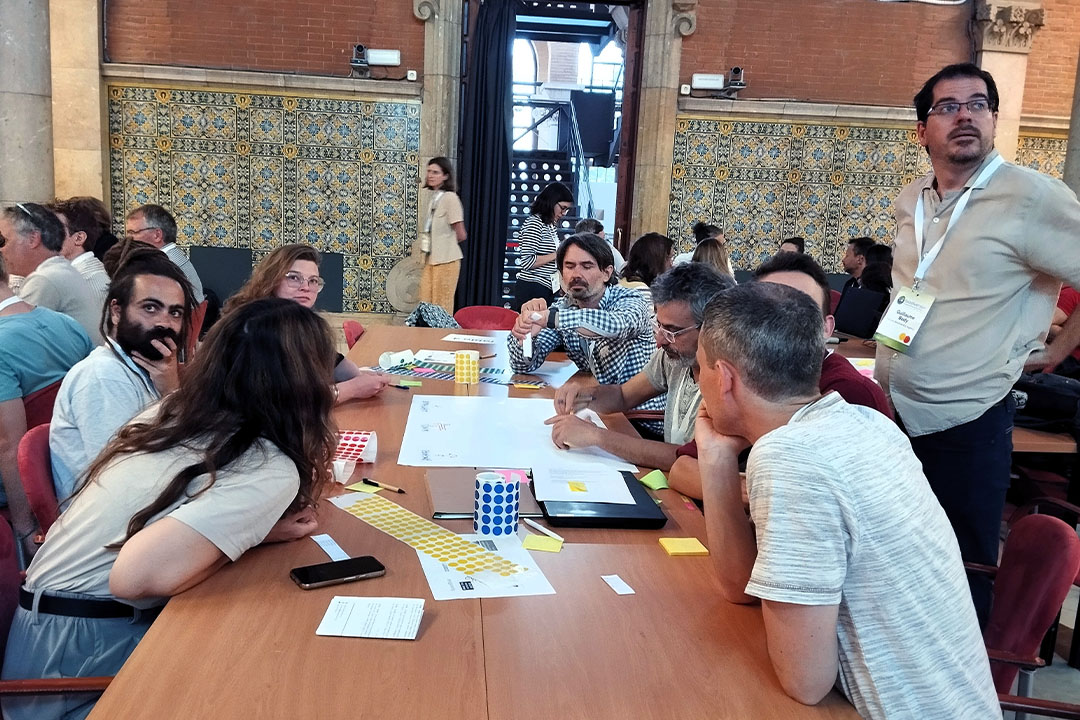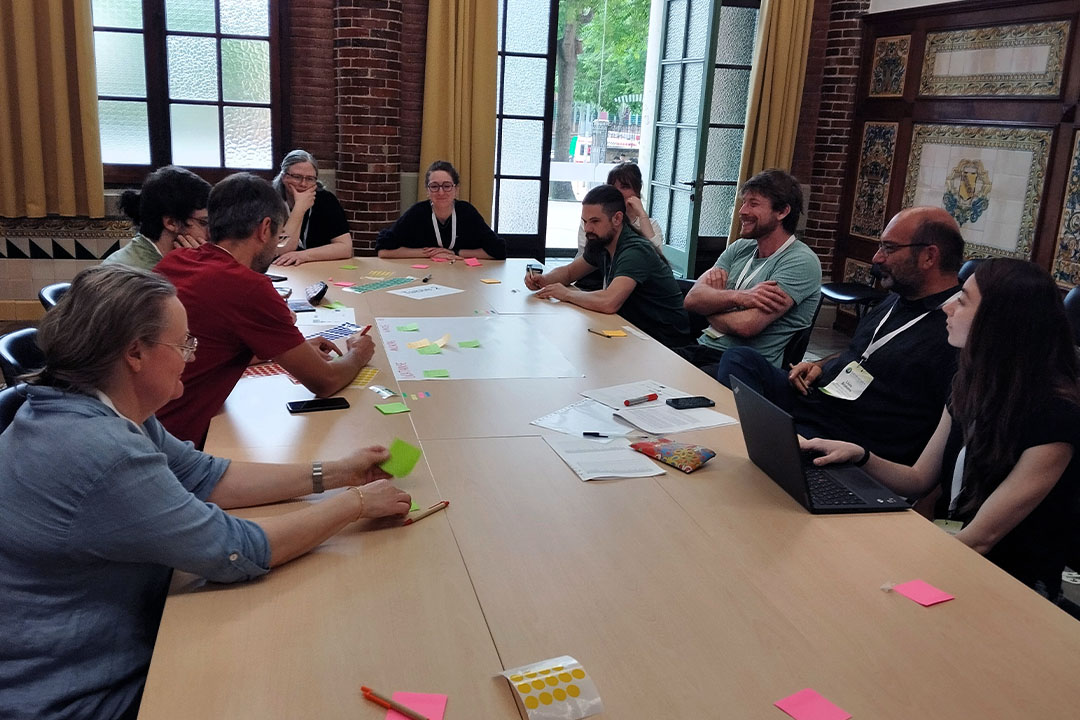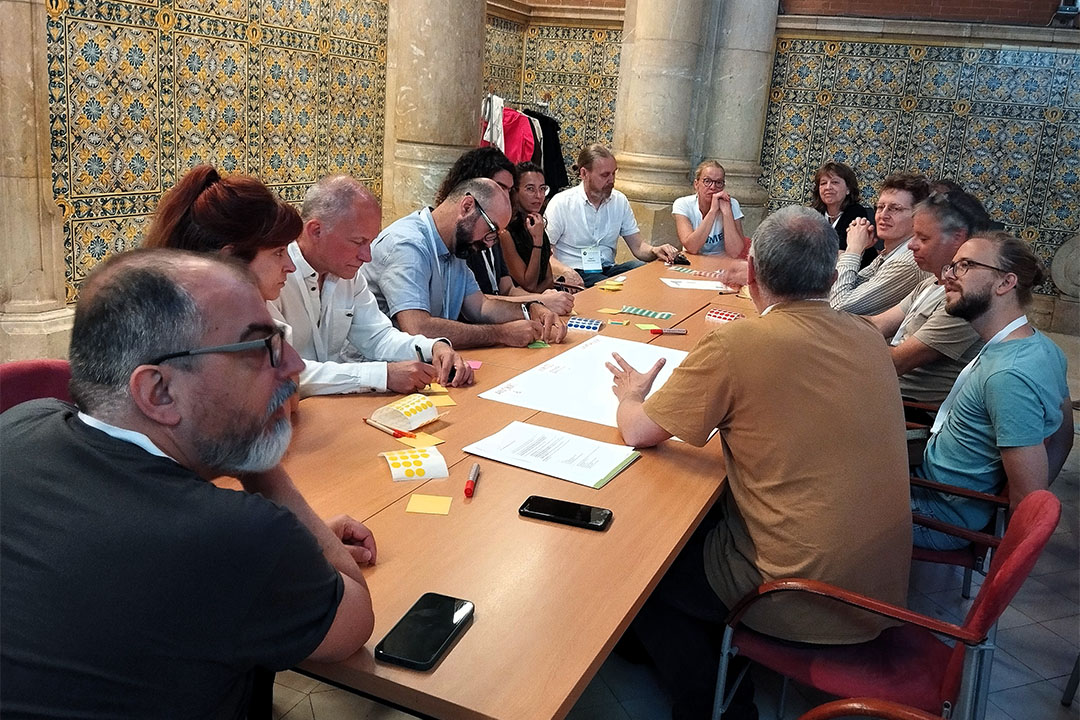In May 2025, the first Biodiversa+ Biodiversity Monitoring Science Fair brought together researchers, policymakers, practitioners and innovators in Barcelona to explore how emerging technologies can enhance biodiversity monitoring and inform environmental decision-making across Europe.
Project spotlights
The fair featured a range of innovative projects shaping Europe’s biodiversity monitoring landscape:
- BioAgora Monitoring Knowledge Expert Network connects biodiversity monitoring efforts to EU policy needs by mapping existing initiatives, identifying bottlenecks in data workflows, and aligning indicators with EU legislation. A central challenge is making vast and complex biodiversity data accessible and usable for policymakers.
- Priodiversity is a national-scale initiative in Finland to improve data accessibility, coordination and method development, including molecular and remote sensing-based monitoring. It addresses the fragmentation of monitoring schemes, which often results in data that are difficult to find, access and compare.
- Arise in the Netherlands is building a large-scale species identification system using eDNA, sensors and AI, supported by standardised workflows for efficient data integration. A key challenge is creating comprehensive reference databases to ensure accurate and scalable species recognition.
- MAMBO develops AI, remote sensing and automated tools for terrestrial biodiversity monitoring, including insect detection and habitat mapping. Its main hurdle lies in the time-consuming work of collecting, cleaning and validating the large datasets needed to train robust machine learning models.
- MARCO-BOLO enhances marine biodiversity monitoring through the use of eDNA, comparing it with traditional methods and developing indicators for EU marine policy. The project must navigate resistance from parts of the scientific community still sceptical of eDNA’s validity and utility.
- OBSGESSION integrates Earth observation, citizen science and AI modelling to track biodiversity change and its drivers, while explicitly accounting for uncertainty. One of its main challenges is propagating uncertainty from diverse data sources through ecological models in a meaningful way.
- Biodiversity Meets Data aims to unify tools and outcomes from multiple projects into a single platform for biodiversity management. The main obstacle is harmonising spatial, temporal and taxonomic data across fragmented initiatives to enable coherent data integration and use.
- SEAGHOST studies the movements and ecology of poorly known storm petrel species using miniature tracking devices and diet analysis. The work is limited by low geolocator recovery rates, which make long-term migration data collection both difficult and uncertain.
- BIO-JUST explores environmental justice in conservation by engaging local communities in mapping and storytelling around protected areas. It addresses the exclusion of local voices from decision-making, which can lead to socio-economic harm and reduced support for conservation goals.
Topical sessions
A series of topical sessions explored key technologies driving advances in monitoring, including bioacoustics, remote sensing, and environmental DNA (eDNA):
- Bioacoustics: The panel highlighted the growing potential of passive acoustic monitoring (PAM) to track species like bats, birds, amphibians, and invertebrates. Key challenges include standardising device calibration due to varying “detection space,” managing large data volumes, high initial costs, and limited training. AI performance varies across taxa, with birds well covered but aquatic species underrepresented, and background noise affecting reliability. Trust depends on transparent AI use, model validation, and human oversight. To improve PAM, standardised metadata, open-source AI models, and noise-resilient testing frameworks are crucial. Practical applications include bat activity thresholds guiding turbine shutdowns and platforms like batmonitoring.org that make data accessible through citizen science and gamified tools.
- Remote sensing: The session reviewed how hyperspectral imaging and other remote sensing tools reveal plant traits such as chlorophyll content, leaf structure, water stress, and photosynthetic capacity, enabling detailed ecosystem mapping at fine scales. The AVIS 4 sensor, capturing over 200 spectral bands with sub-metre resolution, was introduced. Challenges remain in integrating remote sensing with ground truth data and quantifying uncertainty. Upcoming Copernicus missions will expand monitoring capabilities through advanced imaging and radar technologies.
- eDNA: eDNA’s rapid rise, highlighting lessons from microbial ecology where metabarcoding transformed research but revealed the need for complementary methods. Key enablers for scaling eDNA include robust reference databases and user-friendly sampling kits, though traditional observers need reassurance that eDNA complements rather than replaces existing methods. Marine monitoring faces challenges from hydrodynamics and habitat complexity but enables access to remote areas. Harmonisation across ecosystems is difficult due to varying sample types, seasonality, and taxonomic frameworks. Potential solutions include “tree of life” marker panels and standard barcodes, though reference databases require ongoing updates. Clearer policymaker guidance and international efforts like ISO standardisation are advancing eDNA’s integration and AI-supported implementation, with early adoption in countries such as the US, Japan, and Finland.
Science café
The fair concluded with an interactive Science Café, where participants discussed practical enablers and bottlenecks to integrating novel technologies into biodiversity monitoring. Conversations were structured around six key themes:
- “Harmonisation of methods and protocols” focused on establishing international common standards that remain adaptable across different taxa. Positive drivers include increasing international cooperation, active dialogue between researchers and policymakers, and the development of shared protocols. Challenges arise from limited awareness of existing protocols, the sheer number of specialised methods, inflexibility for certain species, divergent stakeholder perspectives, resistance due to established monitoring traditions, and the proliferation of standards.
- “Data management and storage” highlighted the need to separate workflows for raw and processed data, each requiring specific standards and metadata. While prioritising the storage of raw data to enable future methodological advances, participants noted constraints related to storage capacity and governance. There was strong support for establishing common European and national infrastructures to mandate standards and promote collaboration.
- “Upscaling methods and protocols for policy” emphasised the importance of a robust science-policy interface to validate novel technologies and better align monitoring with policy needs through long-term, standardised measurements. Enthusiasm for new tools among scientists, policymakers, and the public, along with compelling success stories, supports momentum. However, barriers include the immaturity of some technologies, limited capacity for scaling, closed system designs, loss of expertise to interpret data, short-term funding cycles, and policy demands focused on immediate results.
- “Costs and expertise required for first implementation” centred on expanding taxonomic and technological skills through specialised training and establishing common hardware and software protocols to ensure interoperability. Novel technologies offer opportunities to reduce costs and accelerate data reporting. The willingness across Europe to share infrastructures and coordinate nationally is encouraging. Yet, shortages of skilled personnel, fragmented development without unified standards, and disparities in funding and implementation speed pose significant challenges.
- “Integration of historical and novel technology data and methods” explored the use of long-term observations to detect global change and promote open data for research and policy applications. AI-driven digitisation of historical data, supported by metadata standards and validation efforts, can reduce costs. Open data repositories facilitate access. Difficulties remain due to inconsistent standards, reluctance among some groups to share data, digitisation expenses, taxonomic revisions, and the ongoing need to maintain expertise to track these changes.
- “Knowledge transfer and capacity building” underscored the value of an inclusive, standardised science-policy interface with unified messaging and multi-directional communication. Effective tools include policy briefs, capacity-building workshops, clear communication of needs, and integration of social sciences through translators and transfer officers. Barriers include language differences, data compatibility issues across methods and time, varying timing needs among actors, and challenges in coordination across diverse groups.
Explore other insights from the Barcelona events:
- The poster session exploring recent development and trends in biodiversity monitoring research
- The market fair with innovative tools on display
- The governance workshop to support a coordinated European biodiversity monitoring framework
- The business and biodiversity workshop, from which two guides will be published this autumn
- Interviews with experts discussing governance, harmonisation, and long-term monitoring
The International Day for Biological Diversity took place during the event, on 22 May 2025. To mark the occasion, we asked participants to share what “living in harmony with nature” meant to them — in just three words!
Biodiversa+ is thrilled to announce its first “Biodiversity monitoring science fair”, a dynamic event connecting key actors from research, policy, and the private sector to explore the latest technologies shaping biodiversity monitoring.
The fair will take place in Barcelona on 21 and 22 May.
While in-person participation is limited and upon invitation only, we’re happy to provide robust online access to key sessions, allowing you to engage with leading experts and projects from anywhere in the world!
What to expect online
21 May (all day):
- Keynotes: Gain insights into the major European and global challenges facing biodiversity monitoring.
- Topical sessions: Delve into the specifics of eDNA, bioacoustics, and remote sensing.
- Project presentations: Discover the latest advancements from various research initiatives.
22 May (morning) :
- World Café: Join a collaborative exchange on the challenges, solutions, and future of monitoring technologies.
Ready to connect to the future of biodiversity monitoring?
More from Biodiversa+ in Barcelona
This Science Fair is part of a week of activities in Barcelona:
- 20 May: Seminar on national biodiversity monitoring coordination centres (upon invitation only)
- 22 & 23 May: Workshops with businesses working with biodiversity data and with funded projects on data management and infrastructures (upon invitation only)
For more details, please contact Cécile Mandon and Iiris Kallajoki.
